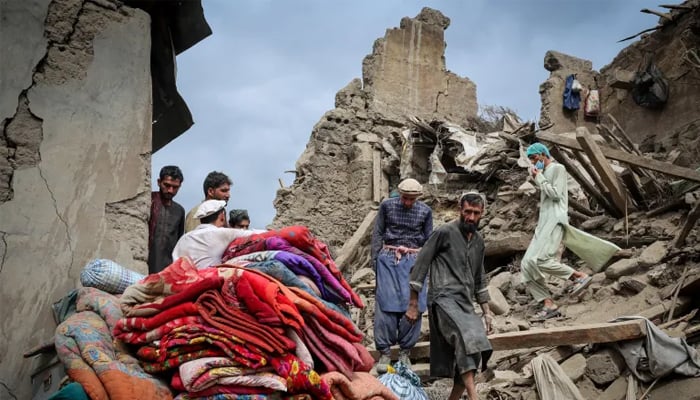Select Language:
A 6.3-magnitude earthquake struck near the northern Afghan city of Mazar-e Sharif early Monday morning, resulting in at least 10 fatalities and approximately 150 injuries. This comes just months after a recent quake and powerful aftershocks at the end of August claimed over 2,200 lives.
Here’s a look at why Afghanistan, a nation ravaged by war and instability, frequently experiences tremors and what can be done to mitigate their effects:
Are earthquakes frequent in Afghanistan?
Nestled among rugged mountains, Afghanistan is vulnerable to various natural disasters, with earthquakes causing the highest number of casualties. On average, around 560 people die annually due to earthquakes, leading to estimated damages of about $80 million each year. Since 1990, studies have documented over 355 quakes exceeding magnitude 5.0.
What makes Afghanistan so susceptible to tremors?
Positioned along the boundary of the Eurasian tectonic plate, Afghanistan shares a transitional zone with the Indian plate, meaning the two may collide or slide past each other. The Arabian plate to its south also influences seismic activity. The continual northward push of the Indian plate against Eurasia is mainly responsible for the country’s frequent seismic events.
Which regions are most at risk?
Eastern and northeastern Afghanistan, especially areas bordering Uzbekistan, Tajikistan, and Pakistan, are highly prone to earthquakes. The capital city, Kabul, which is heavily populated, suffers the highest potential damages, averaging about $17 million annually. Mountainous regions are especially dangerous, as earthquakes can trigger landslides, amplifying the devastation.
Historic major earthquakes in Afghanistan
Since 1900, roughly 100 significant earthquakes have been classified as damaging. Notable recent events include a magnitude 6 quake in 2022 that killed 1,000 people and multiple tremors in 2023 that together caused another 1,000 deaths and obliterated entire villages. In 2015, a massive 7.5-magnitude quake resulted in 399 deaths across Afghanistan, Pakistan, and India. The year 1998 marked a particularly devastating period, with two quakes within three months killing a combined total of nearly 7,000 people.
Steps to increase resilience
Experts recommend constructing new buildings with earthquake-resistant designs and retrofitting existing structures to prevent collapse. Improving early warning systems and monitoring fault lines through geospatial and remote sensing technology can enable timely evacuations. Relocating populations from high-risk zones is also crucial to reducing potential casualties and property damage.







